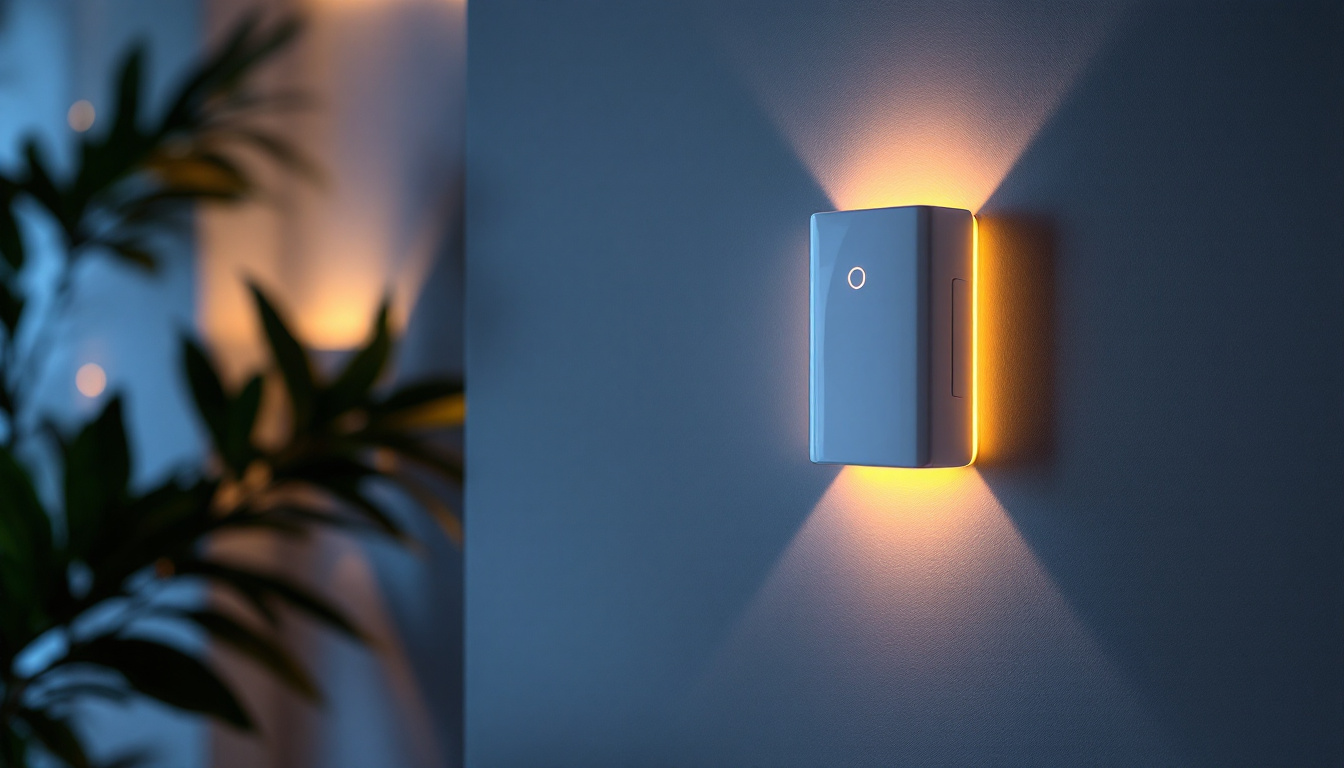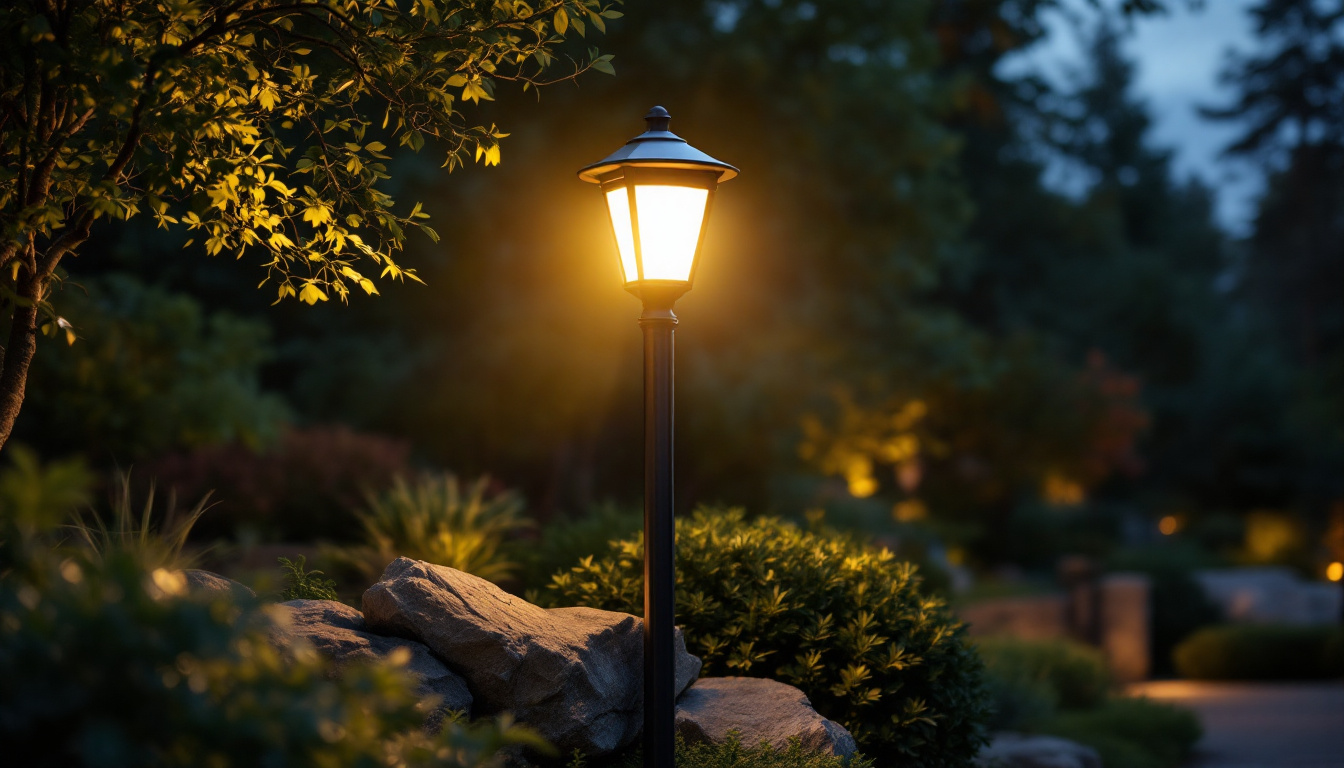
In the realm of smart lighting, motion sensors have emerged as a pivotal technology that enhances both functionality and energy efficiency. These devices detect movement within a designated area, allowing for automated lighting control that adapts to real-time needs. For lighting contractors, understanding the intricacies of motion sensors is essential for delivering modern, efficient, and user-friendly lighting solutions.
Motion sensors not only contribute to energy savings but also improve safety and convenience in residential and commercial spaces. By integrating these sensors into lighting systems, contractors can offer clients a seamless experience that aligns with contemporary smart home trends. This article delves into various approaches that contractors can take when implementing Sensor Switch motion sensors in their projects.
Before diving into specific applications, it is crucial to grasp how motion sensors operate. These devices typically utilize one of three technologies: passive infrared (PIR), ultrasonic, or dual-technology sensors. PIR sensors detect body heat emitted by humans and animals, making them ideal for indoor and outdoor applications. Ultrasonic sensors, on the other hand, use sound waves to detect movement, allowing them to cover larger areas and work effectively in environments with obstacles.
Dual-technology sensors combine both PIR and ultrasonic technologies, providing a more reliable solution by reducing false triggers. Understanding these technologies enables contractors to select the most suitable sensor for each project, ensuring optimal performance and client satisfaction. Additionally, the placement of these sensors plays a critical role in their effectiveness. For instance, positioning a PIR sensor in a corner can maximize its coverage area, while ultrasonic sensors may require a more central location to effectively monitor movement across a wider space. This strategic placement not only enhances the sensor’s performance but also ensures that the lighting system responds accurately to the needs of the environment.
Moreover, the integration of motion sensors into smart lighting systems can be further enhanced by incorporating advanced features such as adjustable sensitivity and time delay settings. These features allow users to customize how the sensors respond to movement, tailoring the lighting experience to their specific preferences and lifestyle. For example, in a busy hallway, a contractor might set a shorter time delay to ensure lights turn off quickly after the space is vacated, while in a living room, a longer delay might be more appropriate to accommodate leisurely activities. By offering these customizable options, contractors can create a more personalized and efficient lighting solution that resonates with clients’ unique needs.
Integrating Sensor Switch motion sensors into lighting systems offers numerous benefits that appeal to both contractors and clients. These advantages extend beyond mere convenience, encompassing energy efficiency, safety, and enhanced user experience.
One of the most compelling reasons to incorporate motion sensors into lighting designs is the potential for significant energy savings. By ensuring that lights are only activated when needed, these sensors help reduce electricity consumption. This not only lowers utility bills but also extends the lifespan of lighting fixtures, resulting in reduced maintenance costs for clients.
Moreover, many clients are increasingly conscious of their environmental impact. By promoting energy-efficient solutions, contractors can position themselves as responsible service providers who prioritize sustainability. This approach can lead to increased client loyalty and referrals, ultimately benefiting the contractor’s business.
Motion sensors play a crucial role in enhancing safety and security in various environments. For instance, outdoor lighting equipped with motion sensors can illuminate pathways, driveways, and entry points when movement is detected, deterring potential intruders and providing a safer environment for residents and visitors.
In commercial settings, motion sensors can be integrated into security systems, triggering lights in response to unauthorized movement. This not only helps in preventing theft but also ensures that employees feel secure while working late or in isolated areas. By offering such solutions, contractors can address the growing demand for safety-conscious lighting systems.
With a variety of motion sensors available, selecting the right one for each project is critical. Factors such as the environment, the specific application, and client preferences must be considered to ensure optimal performance.
When determining the appropriate motion sensor, it is essential to distinguish between indoor and outdoor applications. Indoor sensors are typically designed to cover smaller areas and may be more sensitive to movement, while outdoor sensors need to withstand various weather conditions and cover larger spaces.
For indoor applications, contractors may opt for PIR sensors in hallways, bathrooms, or closets, where quick activation is necessary. In contrast, outdoor applications may require dual-technology sensors to minimize false triggers caused by animals or environmental factors. Understanding these distinctions allows contractors to tailor their solutions to meet specific client needs.
Many modern motion sensors come with adjustable settings that allow contractors to customize their functionality. Features such as sensitivity, time delay, and light level can be modified to suit individual preferences and specific environments. For instance, a client may prefer a longer time delay in a commercial setting to ensure lights remain on during peak hours.
By taking advantage of these customizable features, contractors can enhance user satisfaction and provide a more personalized experience. This attention to detail can set a contractor apart from competitors, showcasing their commitment to delivering high-quality solutions.
Proper installation of motion sensors is crucial for maximizing their effectiveness. Contractors must adhere to best practices to ensure that sensors function optimally and meet client expectations.
The placement of motion sensors significantly impacts their performance. Sensors should be installed in areas where movement is expected, such as entryways, hallways, and common areas. Additionally, contractors should consider factors like the height of installation and potential obstructions that may impede detection.
For outdoor sensors, positioning them away from direct sunlight and potential sources of false triggers, such as trees or shrubs, is essential. Conducting a site assessment before installation can help identify the best locations for sensor placement, ultimately enhancing the effectiveness of the lighting system.
When installing motion sensors, attention must be paid to wiring and connectivity. Ensuring that sensors are correctly wired to the lighting system is crucial for reliable operation. Contractors should follow manufacturer guidelines and local electrical codes to avoid potential issues.
Additionally, considering the integration of sensors with smart home systems can enhance functionality. Many modern motion sensors can be connected to Wi-Fi networks, allowing for remote control and monitoring via mobile devices. This capability can be a selling point for clients seeking advanced lighting solutions.
Regular maintenance is vital for ensuring the longevity and performance of motion sensors. Contractors should educate clients on basic maintenance tasks and troubleshooting techniques to address common issues.
Clients should be encouraged to periodically clean motion sensors to remove dust and debris that may obstruct their functionality. This simple task can significantly enhance the sensor’s performance and accuracy. Additionally, checking the sensor’s settings and adjusting them as needed can help maintain optimal operation.
Contractors should also schedule regular inspections to ensure that all components of the lighting system, including motion sensors, are functioning correctly. This proactive approach can prevent potential issues and ensure that clients receive the full benefits of their lighting systems.
Despite proper installation and maintenance, clients may encounter issues with motion sensors from time to time. Common problems include false triggers, sensors not activating, or lights staying on longer than desired. Contractors should be prepared to assist clients in troubleshooting these issues.
For instance, if a sensor is triggering lights unnecessarily, it may be due to incorrect sensitivity settings or environmental factors. Educating clients on how to adjust these settings can empower them to resolve minor issues independently, enhancing their overall satisfaction with the system.
The landscape of motion sensor technology is continually evolving, with advancements that promise to enhance their functionality and integration into smart lighting systems. Contractors must stay informed about these trends to remain competitive and provide cutting-edge solutions to clients.
As smart home technology continues to gain traction, motion sensors are increasingly being integrated into comprehensive home automation systems. This integration allows for seamless communication between devices, enabling users to control lighting, security, and other systems from a single interface.
Contractors should familiarize themselves with popular smart home platforms and ensure that the motion sensors they install are compatible with these systems. This knowledge will enable them to offer clients a more holistic approach to home automation, enhancing the overall value of their services.
Emerging technologies, such as machine learning and artificial intelligence, are set to revolutionize motion sensor capabilities. Future sensors may become more adept at distinguishing between different types of movement, reducing false triggers and improving overall accuracy.
Contractors should keep an eye on these advancements and consider how they can incorporate them into their offerings. By staying ahead of the curve, contractors can position themselves as leaders in the industry, attracting clients who seek the latest innovations in smart lighting.
Incorporating Sensor Switch motion sensors into lighting systems presents a myriad of opportunities for contractors to enhance their service offerings. By understanding the technology, benefits, and best practices associated with motion sensors, lighting contractors can provide clients with energy-efficient, safe, and user-friendly solutions.
As the demand for smart lighting continues to grow, staying informed about trends and advancements in motion sensor technology will be crucial for contractors aiming to remain competitive. By embracing these approaches, contractors can not only meet but exceed client expectations, paving the way for a successful future in the lighting industry.
Ready to elevate your smart lighting projects with the latest Sensor Switch motion sensors? Look no further than LumenWholesale, where we provide contractors with the highest quality, spec-grade lighting products at unbeatable wholesale prices. Our commitment to cutting out the middleman means you get the best value without the inflated markups. With our extensive selection that meets rigorous industry standards, you can trust that your lighting solutions will be reliable and high-performing. Plus, with free shipping on bulk orders, you can stock up on the premium lighting you need without worrying about hidden fees or compromises. Don’t miss out on the perfect combination of quality, affordability, and convenience. Visit us now at Wholesale Lighting at the Best Value and start transforming your lighting projects today!

Discover how bathroom LED lights can revolutionize your home’s energy efficiency.

Discover the latest trends in solar landscaping lights that every lighting contractor needs to know.

Discover the key factors lighting contractors need to consider when selecting super bright solar lamp posts.

Discover why staying informed about the latest in 3500 lumens technology is crucial for lighting contractors.